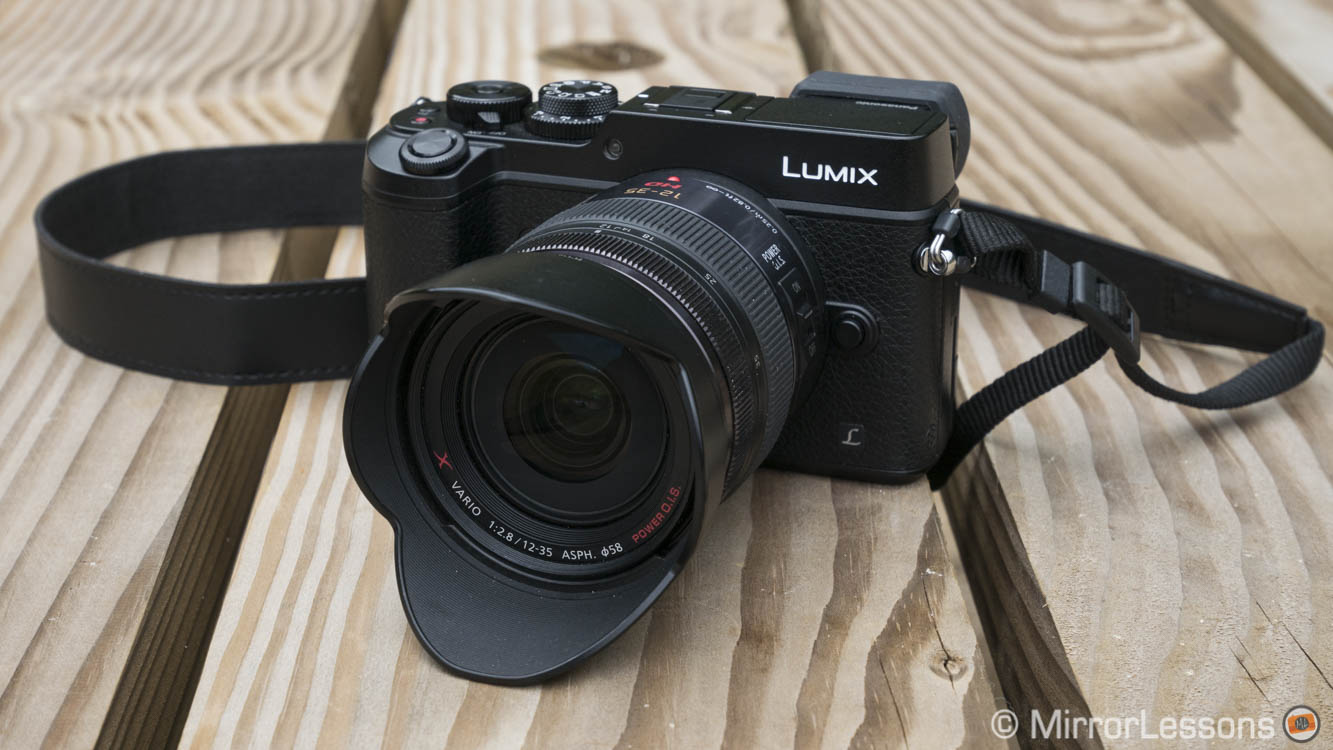I’ve just come back from a day trip to Penrhyn Castle where Panasonic UK held its second Wales-based event in association with the National Trust. Despite being late in the evening, I decided to start writing my first impressions about the Panasonic Lumix GX8 while the experience is still fresh in my mind. We extend our warmest thanks to Panasonic ambassador Ross Grieves, who was able to procure us a pre-production model to use, and to Mark Baber for telling us about the event.


Panasonic Lumix DMC-GX8 Main Specs
- Sensor: 20 megapixel m4/3 Live Mos sensor
- Lens system: micro four thirds
- Weatherproof: Yes (splash and dust proof)
- Internal Stabilisation: Yes (4 axis)
- Autofocus: Contrast detection AF with 49 areas and DfD technology
- Continuous shooting: 8 fps (AF-S), 6 fps (AF-C)
- ISO Sensitivity: 200 – 25600 ISO (pull 100)
- Shutter Speeds: 1/8000 to 60 seconds, up to 1/16000s with electronic shutter
- Viewfinder: Tilting OLED electronic viewfinder with 2,360k dots, approx. 100% FOV coverage and 0.77x magnification
- LCD Screen: multi-angle touch sensitive 3″ OLED monitor (1040k dots)
- Movie recording: 4K at 25fps, Full HD up to 60fps
- Built-in Flash: No
- Extra Features: WiFi, NFC, 4K Photo and 4K Burst, Panorama, Timelapse, Stop Motion, HDR, Multiple exposure
- Dimensions: 133.2 x 77.9 x 63.1mm
- Weight: 487g (including battery and memory card)
Ergonomics & Design
The ergonomics and design of the Lumix GX8 didn’t give me a positive impression at first but there was a specific reason for this.
To me, the name “GX” is associated with a camera both Heather and I fell in love with back in 2013: the GX7.
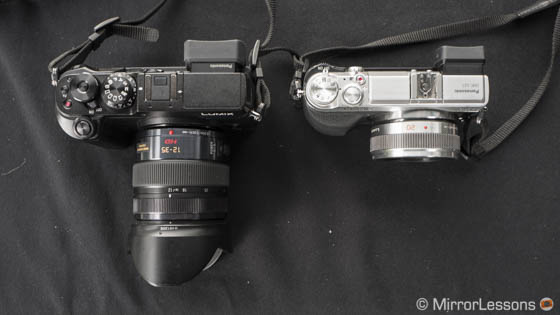
The GX7 was wonderful because Panasonic managed to give it a small and compact body with a great grip. I never felt the need for an additional landscape grip or other accessories to enhance its ergonomics. It was just perfect just the way it was and during the time we owned it, I often used it as a second body for my still work alongside the OM-D E-M1 and my video work next to the GH3. To be honest, I don’t believe there is another camera in the Micro Four Thirds line-up that manages to mix compactness and a good grip as well as the GX7. Even the E-M5 mark II feels less comfortable – I prefer to use it with the optional HDL-8 grip.
The GX8 in this regard is a different camera: it is larger and heavier. Once you accept this fact, you start to get used to it. Though the grip isn’t bad, I still feel that the E-M1 is the most well-designed camera when it comes to ergonomics. One improvement the GX8 has acquired is its build quality: the camera feels very robust, which is justification for the extra bulkiness. The GX8 is also weatherproof (splash and dust), a feature that the GX7 was lacking and whose absense many users complained about.
The dial layout has been cleverly designed. I especially enjoyed using the exposure compensation dial under the main mode dial, even though the former would raise the exposure when I twisted it to a negative value and vice versa. Not to worry, though – it was simply because the pre-production model had a few “bugs”.
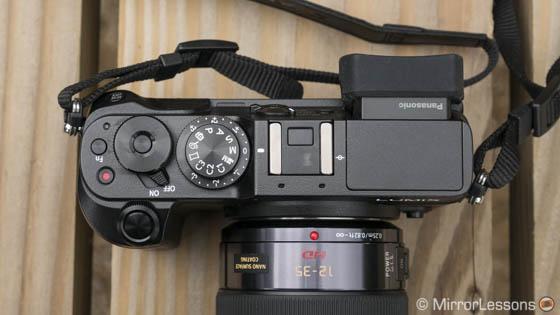
The button layout will look familiar to Lumix users. There are a lot of customisable buttons and you get that excellent “ease of use” that has come to define Panasonic Lumix cameras. Did I already say that their menu system is the best of the best? I think so. 😉
The electronic viewfinder is probably the aspect I liked the most about the camera. Being able to tilt the viewfinder up is of great use outdoors when shooting at a lower height, especially if you don’t want to use the LCD screen. I already appreciated the tilting EVF concept on the GX7 and I don’t understand why some people and reviewers criticise that choice. After all, if you don’t want to tilt it, just leave it in its default position. (There is an automatic locking mechanism to keep it in place.)
While we’re on the topic of the EVF, I can also say that it is the best improvement I’ve found so far over the GX7: it is larger with a great magnification factor (0.77x).
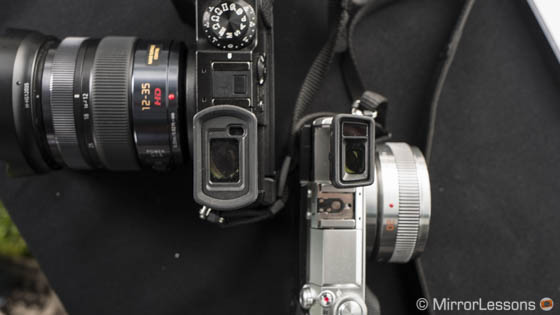
The OLED screen can be rotated and flipped to the side. Curiously, on the rear of the screen there is the same faux-leather texture you’ll find on front of the camera. The screen is of course touch sensitive and like other Lumix cameras, it gives you the best touch experience of all the mirrorless brands.
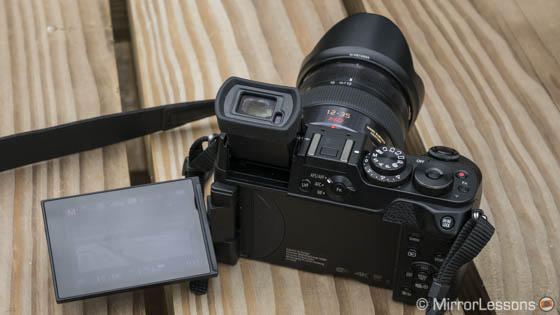
Image Quality
The Panasonic GX8 is the first Micro Four Thirds camera to feature a 20 megapixel sensor. After years and years of 16MP sensors being made, re-made and updated for many Lumix/Olympus bodies, it does “feel” nice to have something new. Now, one afternoon is certainly not enough to put the sensor through its paces but from what I’ve seen so far, the improvements to image quality are not that relevant. Certainly more megapixels will give you some extra detail, but between 16 and 20, there isn’t a major difference.

Click on the image to open the full res version!

Click on the image to open the full res version!
Photographer Ross Grieves showed us a few very large prints (44” on the longest side) from a recent shoot he did with the GX8 and I must admit that the prints were absolutely stunning. However, I have seen excellent large prints with Olympus cameras too, so in the end, this is nothing really new to my eyes.
But those prints were a nice reminder of how good these cameras are even when printing on a large scale.
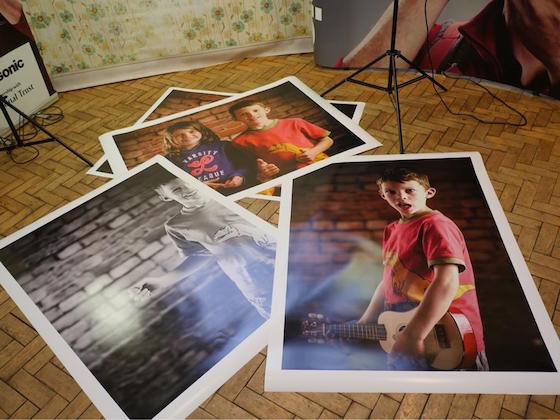
After exploring the spectacular castle grounds outdoors, I also had the chance to shoot inside in the magnificent rooms of the castle to test the camera’s low light / high ISO performance. The sensitivity range of the GX8 hasn’t changed – we still get the usual 200 to 25600 with the extended (pull) ISO 100. Up to 3200 ISO, the images are reasonably clean and 6400 ISO looks really good as well. I can’t really say if there is a noticeable improvement but so far it looks on par with the best Micro Four Thirds cameras out there.

Click on the image to open the full res version!

Click on the image to open the full res version!

Click on the image to open the full res version!
We will test dynamic range later on, as the day wasn’t particularly cooperative weather-wise but below you can see one shot with lots of shadow recovery. It is a good preview of what you can do with this camera.

Click on the image to open the full res version!
Autofocus and performance
The GX8 inherits the same DfD (Depth from Defocus) technology that Panasonic first introduced on the GH4 and then implemented on the LX100 and the Lumix G7. The words “Depth from Defocus” are now a reassurance: the GX8 like the other Lumix cameras mentioned above focuses really fast in both still and video mode. The latter is important because Panasonic cameras stand out from the crowd when it comes to AF during movie recording. I have yet to test the continuous AF capabilities for stills but I did shoot some 4K video footage using the Nocticron 42.5mm and the Lumix 12-35mm f/2.8 in Continuous-AF, and the response was really good even when the camera had to track a bee on a flower at a close distance. The camera also performs well in continuous shooting mode (8fps in S-AF and 6fps in C-AF).

The camera works well in low light. While wandering around Penrhyn castle, which isn’t very well lit, it never really struggled even in the darkest rooms. With 4K video, there was some more hesitation in lower contrast areas.
The GX7 was the first Lumix camera to include built-in stabilisation but the sensor shift only worked on 2 axes. Furthermore, you could only use either the in-body stabilisation or the optical stabilisation found in Panasonic lenses. The GX8 introduces Dual IS technology which allows the camera to use both sensor and optical stabilisation in tandem. After a day of use, I can say that it works well down to 1/5s with short and medium focal lengths. I used the 12-35mm f/2.8 which was the only lens available with the updated firmware. (If you purchase a GX8, remember to update your lens firmware to take advantage of the Dual I.S. function. For now only six lenses benefit from this upgrade but Panasonic promised to release the new firmware for most of its lenses later on.)

Click on the image to open the full res version!

Click on the image to open the full res version!
Unfortunately the Dual IS doesn’t work for video. Rather, the camera combines optical stabilisation with electronic stabilisation (aka software stabilisation) called 5-axis hybrid stabilisation. I couldn’t activate the latter in the camera’s menu (limitation of the pre-production model) so I’ll wait for our own GX8 to arrive to test that further.
The GX8 features many other functions. As I mentioned already, it can shoot 4K video up to 25fps and also integrates 4K photo and 4K burst like the G7. The 4K burst allows you to take a 30fps 4K video and save an 8MP JPG frame from the footage. The camera also includes an electronic/silent shutter, stop motion and many other extra functionalities. Many of these features are already available on other Lumix cameras.
Hands-On Video and 4K footage samples
Below you can watch our quick hands-on video and see some 4K video footage shot at low and high ISO.
Conclusion
The Panasonic GX8 looks like a very exciting camera on paper: a new sensor, updated design, larger EVF and all the goods from Panasonic’s latest bag of technology tricks which includes DfD autofocus and 4K video. My first impressions are positive but the truth is that it feels to me very much like “another very nice camera” rather than a “killer-camera”. I admit that this last sentence is a little unfair, in part because I only used the GX8 for one day, and in part because I test many cameras every month while the average photographer (hopefully) doesn’t use as many.
With its new design come some great features such as weatherproofing and an excellent EVF. However we have lost the “magic” form factor of the previous GX7 which, despite being smaller, retained an excellent grip and ergonomics. I found the GX7 more unique in this regard.
As a first impression, the new sensor doesn’t strike me as a huge improvement in comparison to the many 16MP Micro Four Thirds cameras I’ve had the chance to test. To see if this is true, we will be sure to conduct some comparisons between them.
With this new, more robust body, I believe that Panasonic wants to attract more mid and high end users, not only for video but also for stills. For now, things look promising, and if anything’s going to win me over, it will be that tilting EVF. I can safely say it is the best EVF I have used on a Lumix camera, period.
You can check out more full res image samples in our Smugmug gallery here. We’ll soon have our own copy of the GX8 in for testing, so don’t hesitate to ask any questions or leave your impressions in the comments section below!
